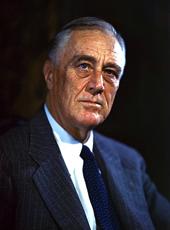THE PRESIDENT: The National Defense Message is going up today at eleven o'clock, and Steve will have copies for you as soon as you get out. There are seven specific recommendations and one general recommendation:
First, the authorization for the Army of additions to antiaircraft materiel in the sum of $8,800,000. Of that sum, $6,800,000 is for the fiscal year 1939.
Second, for the better establishment of an Enlisted Reserve for the Army, to make it correspond to the Fleet Naval Reserve, $450,000.
Third, for the manufacture of gauges, dies, and other aids to manufacture of Army materiel, $6,080,000, of which $5,000,000 is for the fiscal year 1939.
Fourth, $2,000,000 for making up deficiencies—toward making up deficiencies in ammunition for the Army.
Fifth, that the existing authorized building program for increases and replacements in the Navy be increased by 20 per cent.
Sixth, that Congress authorize and appropriate for the laying down of two additional battleships and two additional cruisers during the calendar year 1938. This will call for the expenditure of a small amount of Government funds during the fiscal year 1939.
Seventh, that the Congress authorize and appropriate a sum not to exceed $15,000,000 for the construction of a number of new types of small vessels, such construction to be regarded as experimental in the light of new developments among navies, and to include the preparation of plans for other types of ships in the event that it may be necessary to construct such ships in the future.
Those are the seven specific recommendations; then there is one general recommendation:
I believe also the time has come for the Congress to enact legislation aimed at the prevention of profiteering in time of war and the equalization of the burdens of possible war. Such legislation has been the subject for many years of full study in this and previous Congresses.
Q. Mr. President, is there anything about the size of battleships there?
THE PRESIDENT: Oh, no!
Q. About the size of guns?
THE PRESIDENT: No—oh, no!
Q. Or as to the character, Mr. President, of those small vessels?
THE PRESIDENT: No—oh, no!
Q. Mr. President, what do you figure this steps the appropriation up for in 1939?
THE PRESIDENT: I don't know—oh, in 1939—15, 16, 17, 22, 28—about $29,200,000.
Q. Mr. President, what do you mean by the "equalization of burdens in time of war"?
THE PRESIDENT: What?
Q. What do you mean by "equalization of burdens in time of war"? Do you want to explain that?
THE PRESIDENT: Well, so that the whole nation will engage in war if we unfortunately have one. . . .
Q. Mr. President, the terms of this Message—of course we haven't seen it yet—is it the intention that Congress shall determine the size of vessels, or is that to be authorized and left to the Navy staff?
THE PRESIDENT: Well, it is done sometimes both ways. Sometimes the Congress appropriates the money and the Navy fits the money to the ship; other times the Congress directs the actual tonnage of the ship.
Q. It is the intent here that there shall be that sort of cooperation?
THE PRESIDENT: Those are technical details that it is a great deal better to say nothing about. Otherwise you will get out on a limb. . . .
Q. Mr. President, if we may get back to the general proposition of war, when and if one comes—that is, the proposal that has been talked by a good many groups of persons of drafting manpower, capital, and manufactures; in other words, making all subject to national defense requirements.
THE PRESIDENT: In one sense, I don't quite like the word drafting.
Q. That is the word that has been used.
THE PRESIDENT: Yes, but I think we ought to have a better word than drafting.
Q. Mobilization?
THE PRESIDENT: That's it—mobilization.
Franklin D. Roosevelt, Excerpts from the Press Conference Online by Gerhard Peters and John T. Woolley, The American Presidency Project https://www.presidency.ucsb.edu/node/209315

